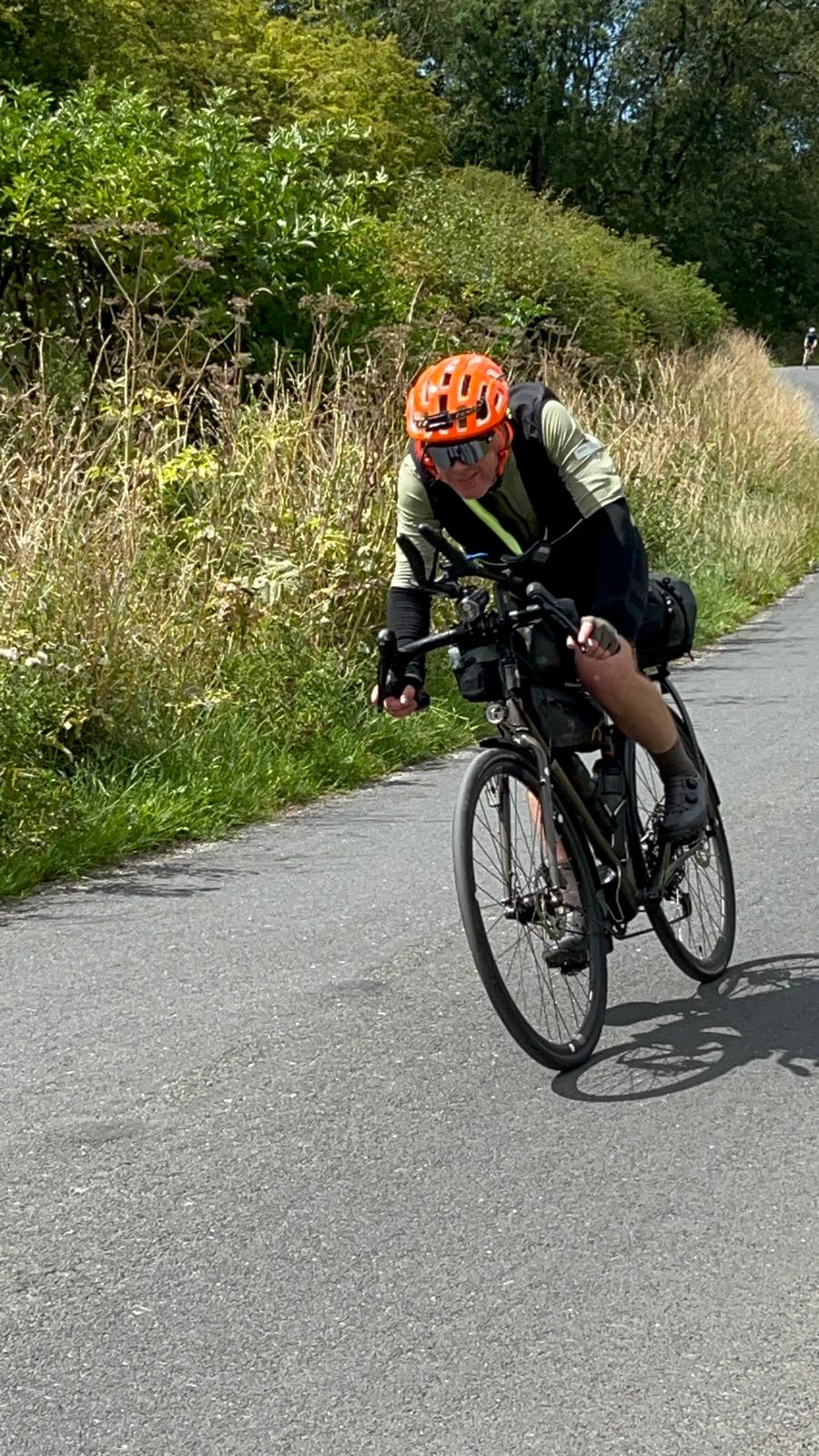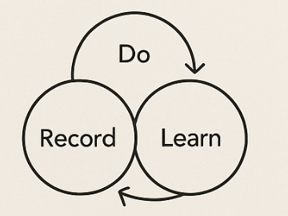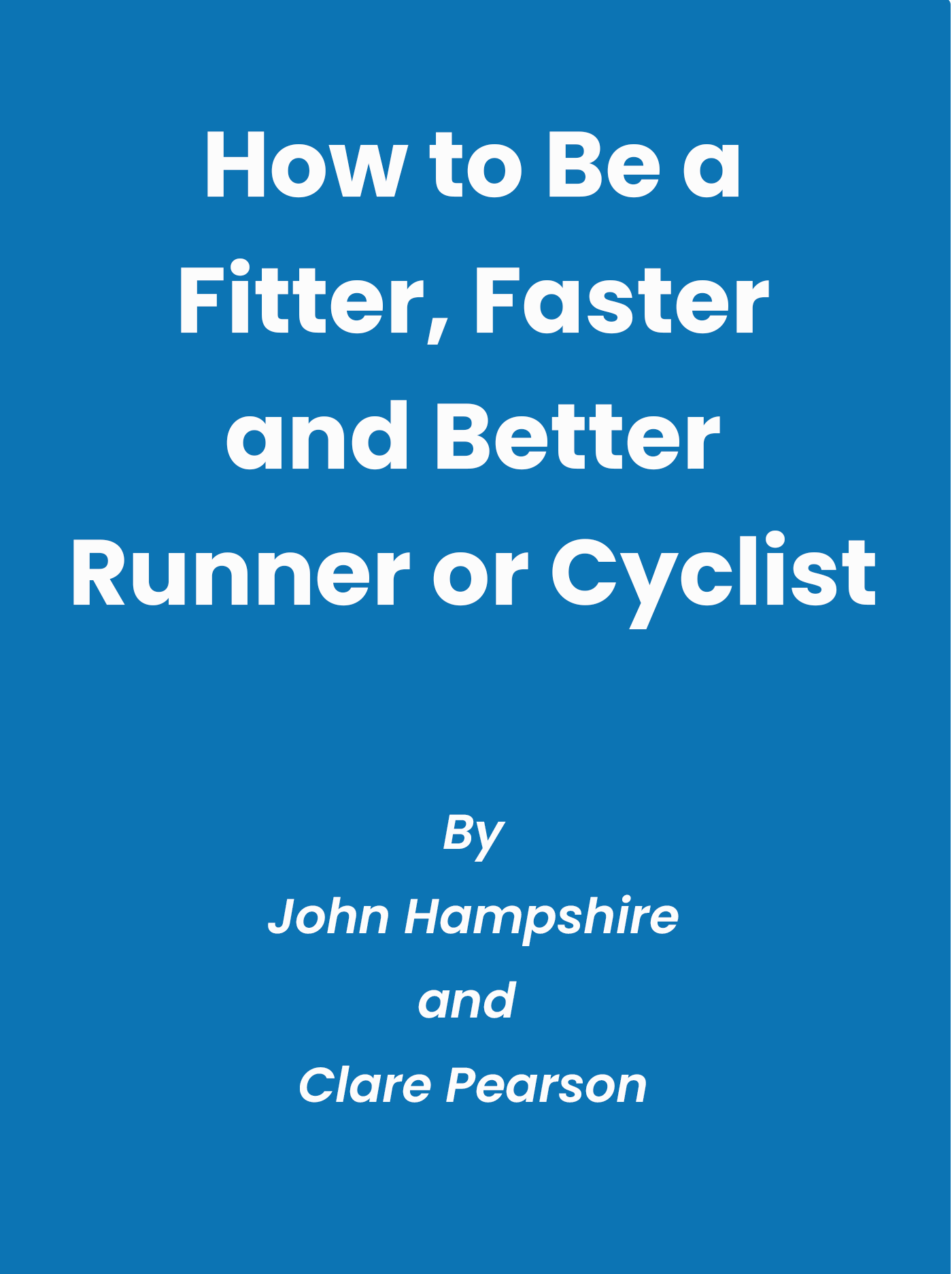How to Start Your Own Training Week and Build Consistency – Endurance Bike and Run Guide

(thanks to David Toms for the featured image)
Getting Started with Your Own Training Week
Getting fitter is about taking action, learning from that action and making adaptations. Once you start doing things you can start to make adaptations and improvements, quickly gathering and reviewing information about what is working and what isn’t, creating momentum for positive change.
What You Will Learn:
- How to take an honest snapshot of your current training week
- Why simple weekly routines create sustainable progress
- How to start journalling to connect how you feel with what you do
- What Alex, our example athlete, learned from combining a journal with her wellbeing and training data
- How coaches use these same insights to refine training over time
1. Start Where You Are
Your journey starts where you are, with your current fitness, your body as it is, your schedule, and your life as it looks right now. Where else could it start?
When I start working with someone new I don’t run tests or make changes, I take some time to look at things.
There are many ways to build fitness and achieve goals. What we are aiming for is something sustainable that works with your life. What you already do is a good indication of a natural routine and therefore the best place to start.
Once you see your own patterns clearly, you can start improving them.
2. What is a Typical Week Now
Take a piece of paper, use a note taking app, open your calendar, or use your training diary app.
Sketch a normal week of training or exercise. Don’t worry if you have been struggling and doing nothing, or almost nothing. Write down what you did last week because that is what you are actually doing. It is very important to be honest and not to pretend that things are usually better, you can build up quickly if you create the right circumstances but desire to do more doesn’t mean you have been doing more. Start where you are now.
- When do you usually ride, run, or train?
- How long are those sessions?
- Which ones feel hard? Which feel easy?
- When do you rest?
- When do you eat?
You’re not designing a new plan — you’re describing what’s real.
Meet Alex, 43: She’s been cycling seriously for about five years.
She loves gravel rides and dreams of doing a bikepacking event next summer, maybe also a few audax/brevets to keep things interesting.
Work deadlines, family, and the occasional crash of motivation all get in the way but she always feels better for a bike ride.
Her husband, Peter, 51, runs marathons, and between his training, teenage kids, and real life, there’s plenty to juggle.
When she’s rested and focused, she feels unstoppable. When tired or pre-menstrual, everything feels hard.
She’s not chasing a podium but she would love to see how good she can be. At the moment, she just wants to feel good on the bike and build confidence for longer adventures.
Here is what Alex’s typical week looks like:
Monday – Rest, catch up on admin, plan for the week
Tuesday – interval session or indoor ride
Wednesday – easy jog or bike ride
Thursday – intervals - in theory but sometimes it ends up being a glass of wine
Friday – rest
Saturday – long ride sometimes with friends
Sunday – family walk, bike ride or run in the countryside
Some weeks this all happens and on others things just drift. Alex finds things harder in the winter when it is dark both in the morning and in the evenings. During the summer things are easier but she doesn’t do the intervals very often because she just wants to enjoy the fresh air. Most nights, Alex eats with her husband in front of the television, she likes to do her training in the morning if it is solo. On Tuesdays and Thursdays she does yoga if she has the energy. She would like to do some strength training because people tell her it is important but she doesn’t really like it, partly because she doesn’t understand it.
Alex and Peter have enough money to support themselves and invest in their sports but not a lot for luxuries. They value wellbeing and health above possessions and love that they can share their active lifestyles with their children.
What Does Your Week Look Like?
Once you’ve sketched out your week, look at it as if you were your own coach.
Where are the hard sessions? How many hard sessions each week? Hard is either high intensity like a race, interval session or hard group session, or long; anything that leaves you tired the next day. Where does recovery happen?
Weekly routines work because they create rhythm, remove the need to make decisions about what to do, and create patterns that we can learn from and adapt gradually to improve. Without routine it is very difficult to see what works and what doesn’t as the impact of any given session on other sessions isn’t easy to see..
Not every week will be the same, some will be harder and some easier and for female athletes hormonal rhythms may influence energy and recovery. Your weekly framework still works; you can adjust intensity or rest as needed while keeping the same shape.
A good routine isn’t a rigid taskmaster, it’s a framework that flexes with real life. Work trips, family events, illness will all happen but if you understand the structure of your training you can adapt much more easily.
The goal is to learn how to adapt and maintain sustainable progress.
Coach’s Note: “A week is short enough to plan and long enough to reveal trends. We use a week because most people have weekly commitments, even if you aren’t tied to a standard working week it is likely that you have some commitments that are.”
3. Start Journalling
Now that you have defined what you actually do, start writing about it.
Keep it simple. Make a daily habit of just writing down the things you think are important. You can’t do it wrong, as you get into the habit you will start to focus on things that peek your interest and then naturally make adjustments.
You can either make an entry in your training diary app or use a separate journal. There are pros and cons to both but it is useful to use an online journal that allows you to export to a pdf or similar from time to time. Notes, Google Docs, TrainingPeaks comments or intervals.icu are all good. Later on in this series we will discuss why you will want to look back and find patterns.
4. Reflect on the Past Seven Days
If you already log your training, review the last week. If not, write a quick summary in your new journal.
- What went well?
- What felt hard or draining?
- Did you recover properly between sessions?
- How consistent were you?
 This isn’t about judging performance, it’s about learning. Some things you’ll want to change immediately; others can wait until you know more but be cautious about making any big change now. It is often better to just observe and reflect.
This isn’t about judging performance, it’s about learning. Some things you’ll want to change immediately; others can wait until you know more but be cautious about making any big change now. It is often better to just observe and reflect.
Later chapters will show you how to fine-tune sessions and balance load, but for now, awareness is enough.
What Alex Learned This Week
After reviewing her journal of short daily notes, Alex began to notice some patterns.
“I realised my Garmin keeps telling me I slept badly on nights I’ve had a glass or two of wine, and when I look back at my journal, those are the mornings I feel tired and skip training. It’s so obvious now I’ve written it down.”
“I also noticed that Thursdays always feel harder. It’s not the training, it’s the late Wednesday meal after taking the kids to hockey and then winding down with Peter that pushes bedtime back. I’m moving my harder session to Friday and treating Thursday as a recovery spin instead.”
“And I found that early morning intervals just don’t work unless I eat something first but easier sessions are fine. This week I’m trying a banana or energy gel before my ride.”
Small insights like these turn random sessions into learning cycles. They’re not about perfect data or advanced metrics, just awareness and building good habits.
If you use a smartwatch or fitness tracker, you can include that information in your journal. It doesn’t have to be technical. Start by noting what your device already gives you, sleep quality, stress, or readiness scores, and see whether they align with how you actually feel. Over time, you’ll learn which numbers are meaningful and which aren’t. We will go into a lot more detail of how to use these metrics later.
Coach’s Note: “Technology can highlight patterns, but only you can interpret them. Your journal translates the data into understanding.”
How Coaches Apply this at EBR
Endurance Bike and Run coaching combines structured data with real-world context. The process is a conversation tool, athletes log patterns, coach reviews trends, and together we plan small course corrections. The process is cyclical: plan → observe → adjust → learn.
We use AI tools to spot patterns in both subjective journal comments and measured data in wellbeing and training metrics. It isn't an automatic process because AI tools aren't as clever as humans in this respect but AI is very good at sifting large amounts of data to spot patterns that we can later review and discuss to make insightful gains.
Bring together what you’ve tracked and what you’ve learned:
- Download: the Planning Spreadsheet and combine it with your current training plan.
- Reflect: note two or three trends from recent months.
- Book: a chat with a coach to review your plan and learn how to adapt your training rhythm to your personal physiology.
Remember: The more you understand your rhythms, the more flexible, confident, and consistent you become as an athlete and as a person.
5. What You Have Learned So Far
You have:
- Sketched your real weekly training pattern.
- Identified some patterns in your routines.
- Started a journal for reflection.
- Reviewed what’s working and what isn’t.
- Made some small changes that begin your positive journey
This is already a functional training system and if it is all you do, you are sure to improve your fitness and lifestyle.
Later in this series we’ll build on this foundation, learning how to adjust the right stress, track progress, and individualise training.
Integrating the Individual Lens
The lessons from this chapter reach beyond the principles of training. The good and bad habits apply to everyone including men navigating stress and fatigue, masters athletes balancing recovery, women coping with their unique environments and physiology . Learning how to listen to your mind and body using all the tools available to you helps you adapt according to your individual personality, schedule, and life.
Awareness is the universal performance tool. Whether you are tracking your cycle, your recovery, or your mental energy, the goal is the same: understand your own rhythms, then work with them. That is how endurance performance and sustainable progression truly develop.
Final Thought: The best athletes don’t chase numbers; they build understanding that supports consistent progress. The more you learn about yourself, the better you can train, recover, perform and live.
Ready to find out what you're capable of when you do the important things consistently? Alli's transformation started with an honest conversation about what was really possible. Yours can too.
Book a time for a free, no obligations consultation with me using the form below.
Personalized Coaching Support
For the most comprehensive approach, our 1-1 Coaching Services offer fully personalized guidance tailored to your unique physiology, lifestyle, and goals. Working directly with a coach provides:
- Customized training adjustments based on your specific responses
- Expert interpretation of your progress markers and fatigue signals
- Personalized implementation of the Traffic Light System to monitor outside stressors
- Accountability and motivation to maintain consistency
- Real-time modifications to your plan as life circumstances change
This personalized approach represents the gold standard for implementing sustainable training principles, as it adapts continuously to your evolving needs and responses.
Sign up for weekly tips and insights
Please share with your friends
Other articles you might like
Tags:
cycling, running, base training, Cycle Training, Endurance Training, Coaching, trail running, ultra running, ultra-cyclingOctober 29, 2025

Comments